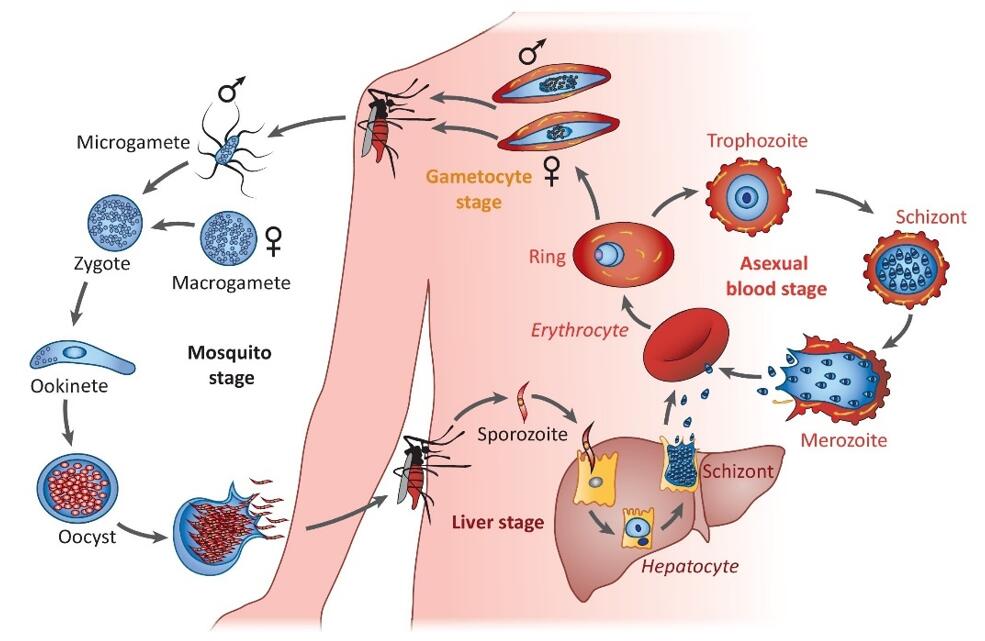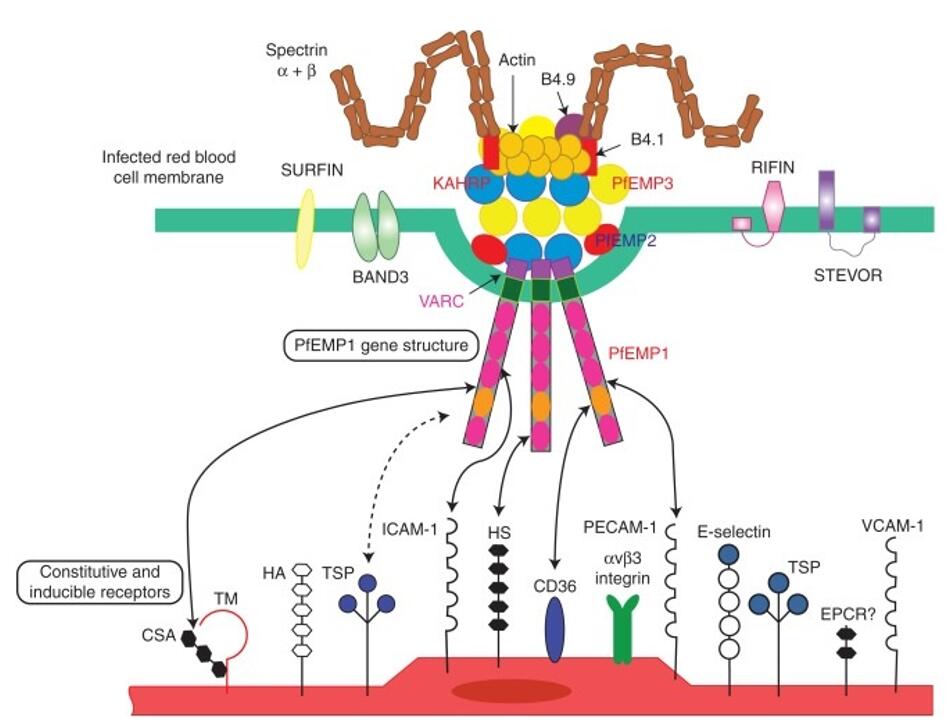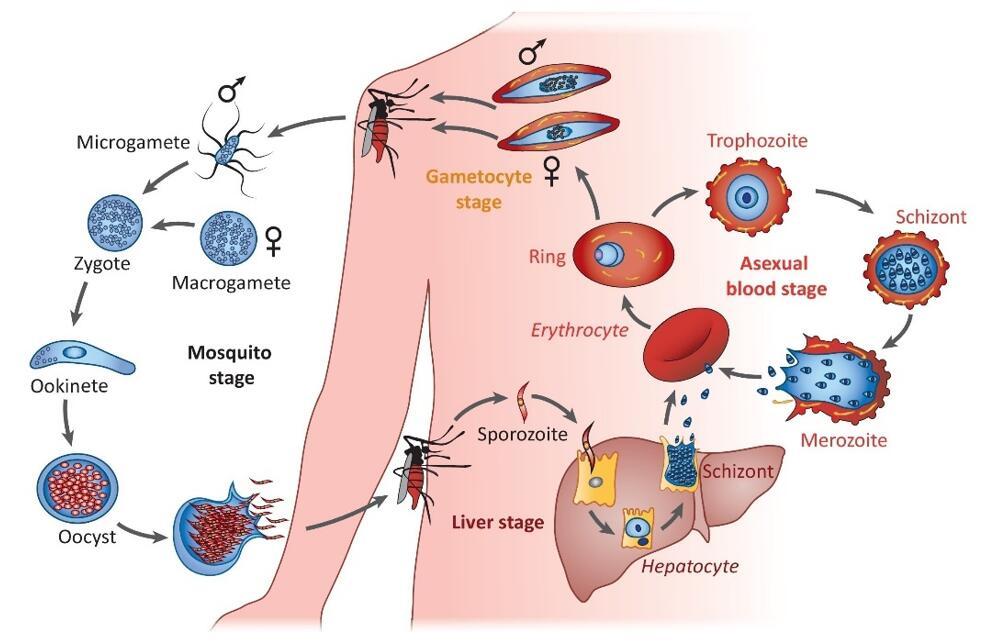Plasmodium, a unicellular eukaryote, is a genus of Plasmodiidae family, and is an obligate parasite of vertebrates and insects. The species are distributed anywhere in the world where suitable hosts are found. Plasmodium parasites, which were first discovered in the late 19th century, include six species that often infect humans: P. vivax, P. falciparum, P. malariae, P. ovale wallickeri, P. ovale curtisi, and P. knowlesi. P. falciparum is the most lethal to human beings, causing hundreds of thousands of deaths every year. Although P. vivax is less toxic than P. falciparum, it is the most common and widely distributed cause of malaria recurrence.

Fig. 1 Life Cycle of Plasmodium (Maier AG, et al. 2019)
Plasmodium is a mosquito-borne infectious agent. In the mosquito–human life cycle, it has experienced 10 or more morphological states. The life cycle of plasmodium begins when parasites called sporozoites produced in insect vectors enter the blood of vertebrate hosts after being bitten. Sporozoites quickly migrate to the liver and invade the liver cells, where they reproduce asexually for thousands of times, producing merozoites. The merozoites are released back into the blood and infected with red blood cells, where they reproduce asexually again to produce new merozoites. Some merozoites then differentiate into the next stage of development, called gametocytes. Insects will ingest blood containing gametocytes from infected vertebrate hosts. And gametocytes reproduce sexually in insects, produce sporozoites again, and continue their life cycle.

Fig. 2 A model of the interactions between Plasmodium parasites and the human endothelium (Milner DA Jr. 2018)
Plasmodium is the pathogen of malaria. Symptoms of malaria usually include fever, fatigue, vomiting and headache. In severe cases, it may cause jaundice, seizures, coma or even death. All clinical symptoms occur after the infection of red blood cells caused by merozoites releasing into the peripheral circulation from liver. The destruction of red blood cells and the reduction of new red blood cells during infection usually lead to anemia.
Antimalarial medications are often naturally derived. Chloroquine is the most widely used antimalarial drug and the cheapest, best tested and safest of all available drugs. However, the emergence of drug-resistant strains rapidly reduces its effectiveness. It is now recommended used in combination with other antimalarial drugs to extend its effective usage. Artemisinin is particularly useful in the treatment of drug-resistant infections. It is generally recommended to use it in combination with other antimalarial drugs (called artemisinin combination therapy, or ACT) to reduce resistance to any single drug component.
RTS.S is the earliest approved malaria vaccine, developed by GlaxoSmithKline (GSK). It consists P. falciparum circumsporozoite protein (CSP) and a hepatitis B surface antigen, which can effectively produce protective immunity. However, the overall efficacy seems to diminish over time, and new completely effective vaccines need to be developed.
References
- Sato S. (2021). Plasmodium-a brief introduction to the parasites causing human malaria and their basic biology. Journal of Physiological Anthropology 40(1), 1.
- Milner DA Jr. (2018). "Malaria pathogenesis." Cold Spring Harbor Perspectives in Medicine 8(1), a025569.
- Maier AG, et al. (2019). Plasmodium falciparum. Trends in Parasitology 35(6), 481-482.
- Ashley EA, et al. (2018). "Malaria." Lancet 391 (10130), 1608–1621.
- Lover AA, et al. (2018). Malaria elimination: Time to target all species. American Journal of Tropical Medicine and Hygiene 99(1), 17-23.





